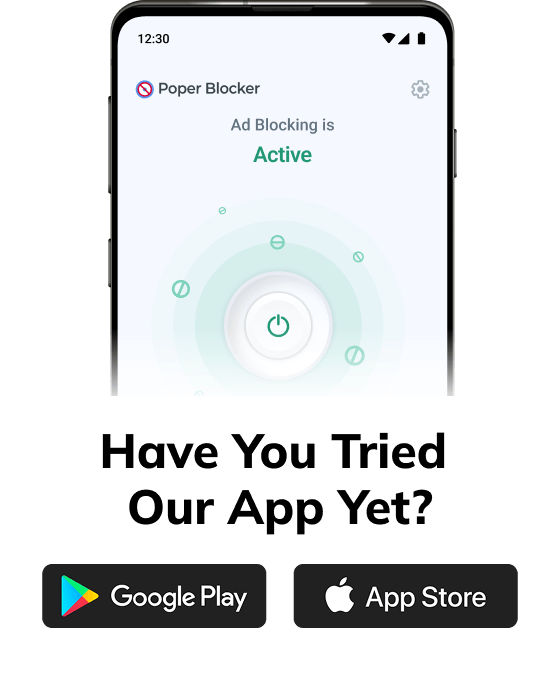Every day, an internet user is bombarded with an average of 5,000 ads (source G2 Learning Hub). This overwhelming flood of advertisements spans across various platforms, from social media to search engines, making it nearly impossible to avoid them. But what if you could browse through this ad-laden online landscape more smoothly?
What are Online Ads?
Online advertising works in a similar way to billboards. Its aim is to catch your attention and make you interested. Online ads can be found in different formats that all communicate messages or promote products, services, or brands. These ad-tracking tactics utilize the extensive reach of the internet and target specific audiences with precision by using data about browsing habits, interests, and even geographical locations to deliver content that is relevant.
The core goal of online ads is to encourage traffic and conversions i.e., moving users from being curious to taking action. Each ad does this differently by asking users to click through a website, buy something, or even sign up for a newsletter as long as there’s an interaction happening between the ad and the user. The beauty of online ads lies in their ability to be measured and adjusted in real-time so they remain effective throughout their time on the web also providing advertisers with performance insights. This dynamic nature allows strategies to be refined for maximum impact making online advertising an incredibly powerful tool for marketers.
Despite its many advantages, being constantly bombarded with too many ads could have a negative effect on people who seek cleaner, more focused experiences while surfing the web. That’s why tools have been created to do just that: filter out unwanted ads and block distractions so you only see what matters most!
Types of Internet Ads
The world of Internet advertising is always in flux and complex, with a variety of ways to reach consumers. Each serves a different purpose and meets customers at different points in their journey, from not knowing what they want, to hitting that “add to cart” button. Below are the different types of online ads:
Search Engine Ads
You’re probably most familiar with these ads. They pop up on search engine results pages when you look up something specific. Their use is pretty self-explanatory — they aim to connect people with products and services they’d like that match up with their search terms. They operate on a pay-per-click basis, which means brands only have to pay for ads when users actually click on them. It’s a much more effective way of using marketing budgets than paying for impressions or views, since if someone is interested enough to click through, the chance they’ll purchase goes up too.
Social Media Ads
Social media has become one big fat ad space (when you’re not just looking at cute puppy pictures). Platforms use our personal data to tailor ads specifically for us based on our interests and behaviors. Facebook, Instagram, Twitter, and LinkedIn all offer unique ad options for businesses trying to target different types of users. Whether it’s a sponsored post or a carousel ad doesn’t matter — each option gets brands’ messages across in different ways and engages users as much as possible.
With the help of Poper Blocker, you’ll be able to manage your exposure to these ads, so that you’ll have a cleaner, more focused social media experience by blocking unwanted content.
Banner and Pop-Up Ads
Think back to early 2000s web design — that’s where you might remember banner ads. Ad spaces appear as rectangles around website content instead of taking over an entire page like pop-ups do. While both formats are great for increasing visibility, we’ve come to hate them due to how obnoxious some can be (especially those that refuse even after we hit the exit button three times).
The rise of ad blockers helps prevent these from popping up while we’re trying to read an important article. When designing future banners or pop-ups, companies are pushed to make them engaging enough to entice clicks without making users want to throw their computers out of a window.
Poper Blocker addresses this challenge head-on, as it has advanced features to block both basic pop-ups and advanced overlays so you can have a smoother browsing experience. With this browser extension’s capability of stopping pop-up ads, you’ll be able to engage with content without interruption.
Video Ads
With faster internet and infinite streaming services, videos have become the go-to ad format for many brands. They can tell a story or evoke an emotion in a way that simple text or static images just won’t do. YouTube offers skippable and non-skippable options for advertisers, providing plenty of versatility in how they deliver messages. These include pre-roll ads that play before a video begins, mid-roll ads that interrupt content midway, and post-roll ads that appear after the video ends. Such a variety makes it more frustrating for viewers to block YouTube ads. And they’re not just confined to video platforms, you’ll see them across social media and other websites as well.
For those who don’t want their favorite cooking show or any important videos interrupted, tools like Poper Blocker exist to help block video ads on certain platforms, such as YouTube and social media where they run rampant.
The diversity in which ads are presented on the internet shows the creativity and adaptability found within online marketing. Advertisers have an extensive set of tools they can pull from, allowing them to finely target their audience and make real-time adjustments based on performance data. But with the rise of ad-blocking technology comes an increasing desire among internet users for more control and less intrusion. This trend challenges advertisers to find new ways to engage their audience while also preserving the user experience.
A Seamless and Uninterrupted Browsing Awaits
The quest for a seamless and uninterrupted browsing experience is paramount. With the proliferation of different types of internet ads, tools like Poper Blocker can be your primary tool in seeking solace from the relentless ad barrage. By empowering users to take control of their online environment, Poper Blocker not only improves the browsing experience but also redefines the relationship between content consumers and advertisers.
As we move forward, the balance between effective advertising and user satisfaction will continue to evolve, with innovative solutions like Poper Blocker leading the charge. This evolution promises a future where online spaces are tailored to the preferences of each individual, offering a cleaner, more enjoyable way to explore, engage, and connect online.
FAQs
How do online ads influence buyer behavior?
Various types of Internet advertising can greatly impact a buyer’s behavior by gaining brand visibility, influencing perception, and driving purchases. Well-targeted ads can introduce new products or services to a receptive audience, encourage exploration of a brand’s offerings, and ultimately lead to conversions. The key is making sure these campaigns are relevant; and if they resonate with viewers’ interests or needs more positively.
Can ad blockers affect website revenue?
Of course! While there are benefits of using an ad blocker, they have been able to hinder site revenue for years now especially since those websites rely so heavily on ad income. Simply put; when users use ad-blockers, they won’t see any ads, which means the website doesn’t earn money from those views or clicks thus leading them to seek alternative ways of bringing in money.
What’s the future of online advertising?
The future of online advertising isn’t certain, but we do know that technology will always play a major role in shaping it over the coming years – along with regulatory laws and consent changes from consumers as well. In terms of ideas though, personalized ads will definitely become much more common in everyday life as algorithms improve and reach their peak efficiency levels.
How do personalized ads work?
This type uses collected data about a user’s online activities (such as browsing history, search queries, social media interactions, etc.) all aimed at displaying way more engaging and relevant ads to their interests and needs. This strategy is designed to maximize the likelihood of conversion by aligning ads with a user’s current interests. It’s safe to say that it requires sophisticated algorithms and data analysis tools to accurately match ads with potential customers, but once it gets going… there’s just no stopping it!


